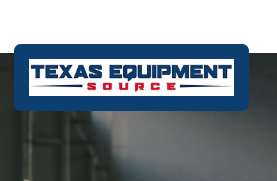Men seeking a solution for enlarged breast tissue often turn to gynecomastia surgery in Riyadh to restore a flatter, more masculine chest contour. While the procedure itself is transformative, understanding what to expect during recovery and the timeline for results is essential for a smooth and successful experience. This guide breaks down the post-surgery journey, from immediate recovery to long-term outcomes, helping patients prepare for each phase.
Immediate Post-Surgery Period: First Few Days:
The initial recovery phase focuses on healing and managing discomfort.
Key Aspects During the First Days:
-
Swelling and Bruising: Mild to moderate swelling and bruising around the chest are normal. These symptoms typically peak within 48 to 72 hours.
-
Pain Management: Discomfort can be controlled with prescribed pain medications or over-the-counter remedies recommended by your surgeon.
-
Compression Garments: Wearing a compression vest or garment continuously is crucial to reduce swelling, support the chest, and help the skin retract.
-
Rest and Limited Movement: Adequate rest is necessary, but light walking is encouraged to promote blood circulation and prevent complications.
First Week After Surgery:
During the first week, healing progresses and patients begin regaining mobility.
What to Expect:
-
Reduced Swelling: Swelling should start to diminish noticeably, though some puffiness may remain.
-
Follow-Up Visit: Typically, a follow-up appointment is scheduled within 5 to 7 days to check incisions and remove any drains if used.
-
Activity Limitations: Avoid heavy lifting, strenuous exercise, and sudden chest movements to protect the healing tissue.
-
Incision Care: Keep incision sites clean and dry, following your surgeon’s instructions on wound care.
Weeks Two to Four:
This phase marks a shift from initial healing to gradual resumption of normal activities.
Recovery Highlights:
-
Improved Comfort: Pain and discomfort continue to decrease significantly.
-
Light Activities: Many patients can return to desk jobs and light daily activities but should still avoid intense physical exertion.
-
Compression Garment: Wearing the compression garment remains important, usually recommended for up to four weeks.
-
Appearance Changes: Chest contour begins to settle, with swelling reducing further and bruising fading.
One to Three Months Post-Surgery:
The majority of swelling resolves during this period, revealing more defined results.
Expected Developments:
-
Chest Shape: The chest takes on a more natural, masculine appearance as tissues settle into place.
-
Numbness and Sensation: Some numbness or altered sensation around the incision sites may persist but typically improves over time.
-
Exercise Resumption: Most patients are cleared to resume moderate exercise after 6 to 8 weeks, avoiding heavy chest workouts until fully healed.
-
Scar Healing: Incision scars begin to fade, becoming less noticeable though may remain slightly pink or raised for several months.
Long-Term Results: Six Months and Beyond:
Final results become evident as the body fully recovers.
Long-Term Benefits:
-
Stable Chest Contour: The chest maintains a firm, flatter profile with minimal residual swelling.
-
Scar Maturation: Scars continue to soften and lighten, blending more naturally with surrounding skin.
-
Enhanced Confidence: Most patients report significant improvements in self-esteem and body image.
-
Lifestyle Impact: Increased freedom to wear fitted clothing and participate confidently in physical activities.
Tips for a Smooth Recovery:
Adhering to post-operative guidelines is key to maximizing results and minimizing complications.
Essential Recovery Tips:
-
Follow your surgeon’s instructions meticulously, including medication schedules and wound care.
-
Avoid smoking and alcohol, as these can impair healing.
-
Maintain a balanced diet rich in vitamins and proteins to support tissue repair.
-
Stay hydrated and get plenty of rest.
-
Attend all scheduled follow-ups to monitor healing progress.
Potential Side Effects and When to Contact Your Doctor:
While complications are rare, being aware of signs that require medical attention is important.
Watch For:
-
Excessive swelling, redness, or warmth around the incision site
-
Severe pain not relieved by medication
-
Unusual discharge or bleeding from incisions
-
Fever or chills indicating possible infection
-
Asymmetry or lumps that feel abnormal
If any of these occur, contact your surgeon promptly for evaluation.
Why Choose Riyadh for Your Gynecomastia Surgery?:
Riyadh is home to skilled plastic surgeons offering advanced techniques and excellent patient care.
Advantages of Surgery in Riyadh:
-
Access to experienced professionals specializing in male breast reduction
-
Use of the latest technology ensuring safer and more effective procedures
-
Personalized care plans tailored to individual anatomy and goals
-
Supportive recovery environment with follow-up care and counseling
Conclusion:
Understanding the recovery process and results timeline after gynecomastia surgery helps set clear expectations and reduces anxiety about the journey ahead. Patients who undergo gynecomastia surgery in Riyadh can look forward to a more confident appearance and improved quality of life as their chest transforms over weeks and months.
By following medical advice, committing to aftercare, and maintaining a healthy lifestyle, the results will not only be physically satisfying but also emotionally rewarding. Consult with a trusted specialist to start your path toward renewed confidence and comfort.







0 Comments